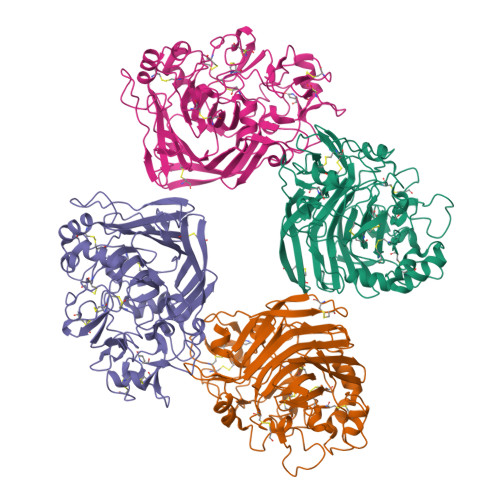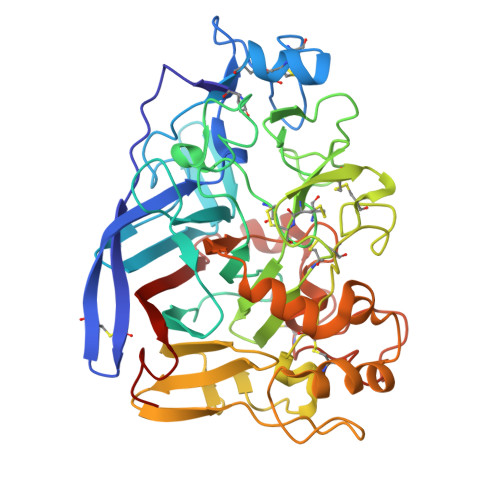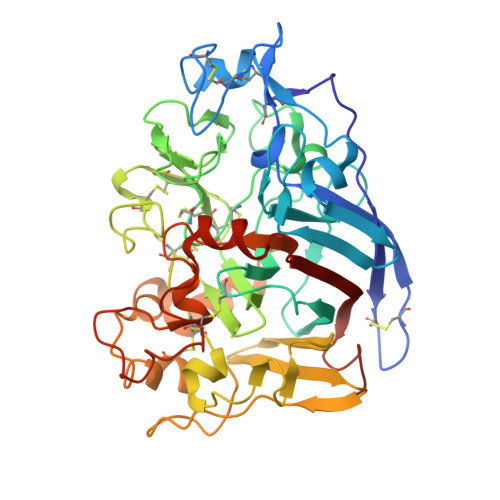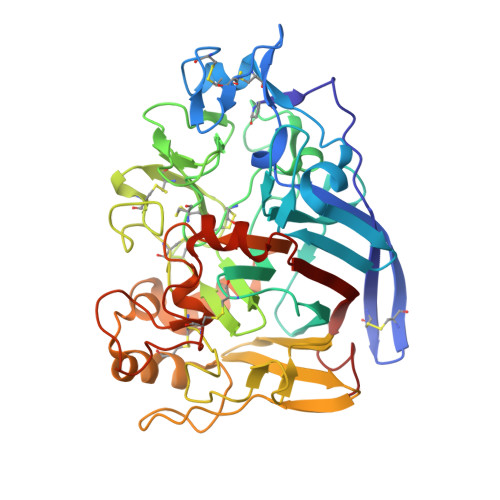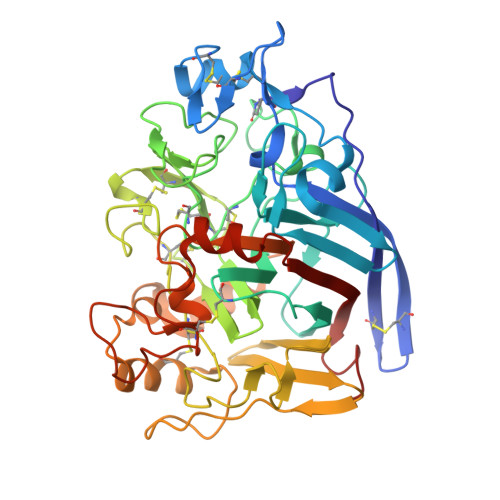Crystal structures of Melanocarpus albomyces cellobiohydrolase Cel7B in complex with cello-oligomers show high flexibility in the substrate binding
Parkkinen, T., Koivula, A., Rouvinen, J.(2008) Protein Sci 17: 1383-1394
- PubMed: 18499583
- DOI: https://doi.org/10.1110/ps.034488.108
- Primary Citation of Related Structures:
2RFW, 2RFY, 2RFZ, 2RG0 - PubMed Abstract:
Cellobiohydrolase from Melanocarpus albomyces (Cel7B) is a thermostable, single-module, cellulose-degrading enzyme. It has relatively low catalytic activity under normal temperatures, which allows structural studies of the binding of unmodified substrates to the native enzyme. In this study, we have determined the crystal structure of native Ma Cel7B free and in complex with three different cello-oligomers: cellobiose (Glc(2)), cellotriose (Glc(3)), and cellotetraose (Glc(4)), at high resolution (1.6-2.1 A). In each case, four molecules were found in the asymmetric unit, which provided 12 different complex structures. The overall fold of the enzyme is characteristic of a glycoside hydrolase family 7 cellobiohydrolase, where the loops extending from the core beta-sandwich structure form a long tunnel composed of multiple subsites for the binding of the glycosyl units of a cellulose chain. The catalytic residues at the reducing end of the tunnel are conserved, and the mechanism is expected to be retaining similarly to the other family 7 members. The oligosaccharides in different complex structures occupied different subsite sets, which partly overlapped and ranged from -5 to +2. In four cellotriose and one cellotetraose complex structures, the cello-oligosaccharide also spanned over the cleavage site (-1/+1). There were surprisingly large variations in the amino acid side chain conformations and in the positions of glycosyl units in the different cello-oligomer complexes, particularly at subsites near the catalytic site. However, in each complex structure, all glycosyl residues were in the chair (4C(1)) conformation. Implications in relation to the complex structures with respect to the reaction mechanism are discussed.
Organizational Affiliation:
Department of Chemistry, University of Joensuu, 80101 Joensuu, Finland.








